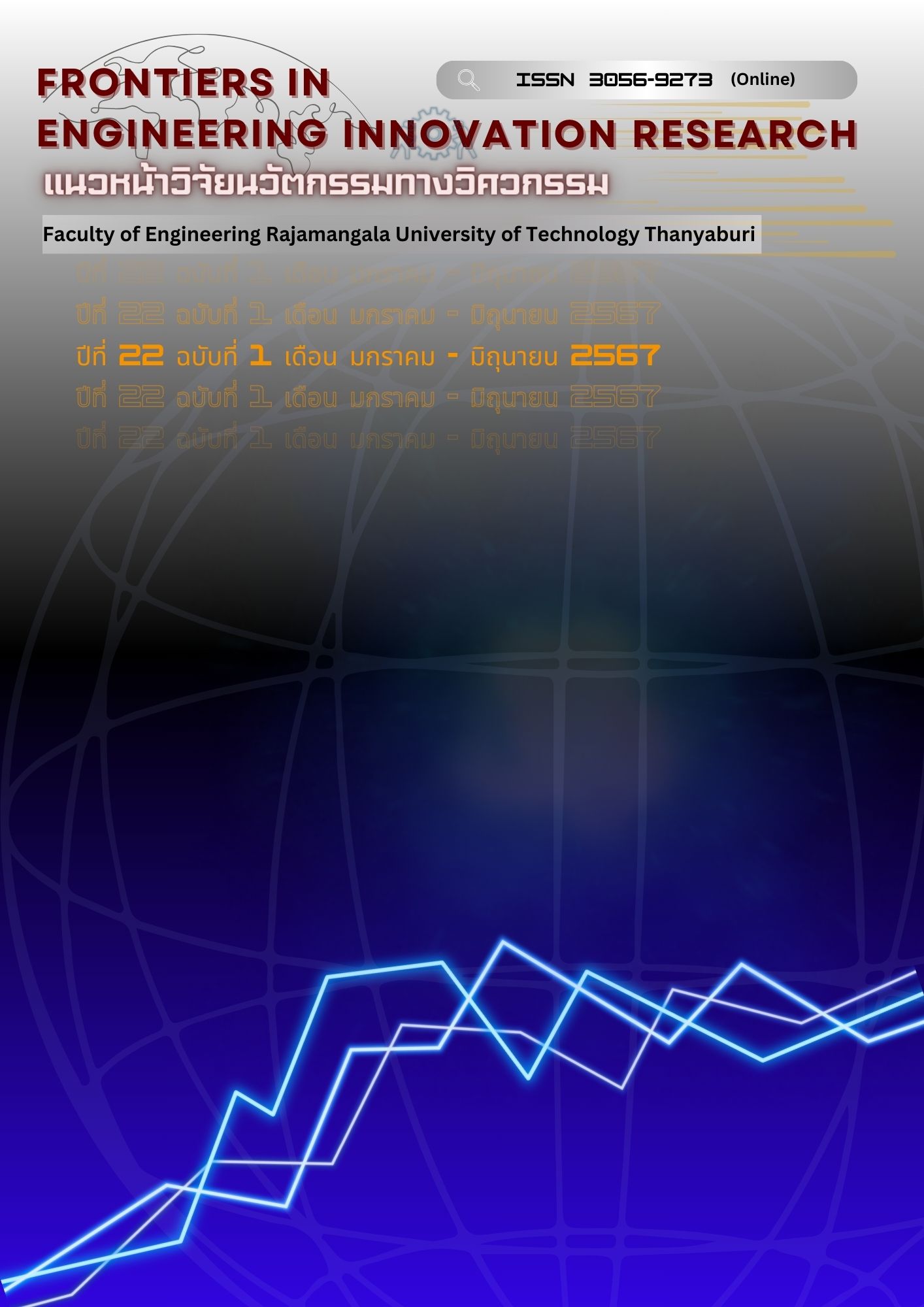Production Planning using Mathematical Modeling Methods a Case Study of Steel Pipes of a Car's Suspension
Main Article Content
Abstract
This paper presents production planning using mathematical modeling methods in order to reduce processing time for steel pipe manufacturing production. The study specifically focused on the polishing and the coating processes with each process involving multiple parallel machines. The production for polished pipes was separated by different production rates while the steel pipe coating were separated into batches according to the diameter of the pipes. Production planning for each process is complex and diverse due to different products and customer orders. Current planning relies on the production planning experience, which results in long processing times of the coating processes. Therefore, the objective of this paper was to find optimal production planning to reduce processing A mathematical model for the optimal production planning for the processes was developed. In addition, the model was applied to the sample data sets and solved using Microsoft Excel Solver. The results revealed that the polishing process time decreased by 11.77 percent and the coating time decreased by 13.34 percent.
Article Details

This work is licensed under a Creative Commons Attribution-NonCommercial-NoDerivatives 4.0 International License.
The manuscript, information, content, picture and so forth which were published on Frontiers in engineering innovation research has been a copyright of this journal only. There is not allow anyone or any organize to duplicate all content or some document for unethical publication.
References
Gresova E, Svetlik J. Modeling within national economy using industry-oriented indicators: Evidence from Czech Republic. MM Sci. J. 2020;6:3892-95.
Gresova E, Svetlik J. Economic impact of industrial segment in the selected country. Manag. Syst. Prod. Eng. 2020;28:312–7.
Cohen Y, Shoval S, Faccio M, Minto R. Deploying cobots in collaborative systems: Major considerations and productivity analysis. Int. J. Prod. Res. 2021.
Cohen Y, Faccio M, Pilati, F.; Yao, X.F. Design and management of digital manufacturing and assembly systems in the Industry 4.0 era. Int. J. Adv. Manuf. Tech. 2019;105:3565-77.
Guo Z, Wang C, Yang G, Huang Z, Li G. MSFT-YOLO: Improved YOLOv5 Based on Transformer for Detecting Defects of Steel Surface. Sensors 2022;22:3467.
Word Steel Association. The white book of steel. Available online: https://worldsteel.org/publications/bookshop/the-white-book-of-steel/(accessed on 10 March 2022).
The importance of steel pipes Rojpairi Automation Buan Equipment Co., Ltd.. https://www.rojpaiboon.co.th/th
Yongphisanphob W . 2566. Business/industry trends 2566-2568: Auto parts industry. https://www.krungsri.com/1.03.2566.
Chalermsak T, Kaona J. Development of Measurement Tools A Case Study Automotive Wire Harness Manufacturer. Journal of Engineering, RMUTT. 2022;20(1):25-30. (in Thai)
Draheim D. Business process technology: a unified view on business processes, workflows and enterprise applications.Berlin: Springer Science & Business Media, 2010.
Salvador M. A solution to a special case of flow shop scheduling problem. Symposium on the Theory of Scheduling and Its Applications, 1973; pp. 83-91.
Geyik F, Cedimoglu, I.H. A Review of the Production Scheduling Approaches Based-on Artificail Intelligence and the Integration of
Process Planning and Scheduled. 2003.
Arz Y. Qwam Alden. Improving productivity employ simulation model: A case study of a steel pipe manufacturing company. Anbar Journal of Engineering Science (AJES). 2022;13(1):35–45.
Maitreesorasunte C, Jeenanunta C, Buddhakulsomsiri J, Chaysiri R, Pannakkong W, Karnjana J, Nakamura M. A steel tube production planning and scheduling with product-dependent changeover time using Digital Twin. International Scientific Journal of Engineering and Technology. 2020;4(2):13-9
Prakob J, Linear Programming.1st ed. Bangkok: National Instiutute of Development Administration; 1992. (in Thai)
Tantasut W, Wijiravanit W, Thongprasert S. Operations research.Bangkok : SE-Education Book Publishers; 1997. (in Thai)
Atthawit T, Pisal Y. Aggregate production planning using spreadsheet solve:model and case study. Science Asia. 2002;28:291-300.
Ahmed W, Fadi A. Solving the university class scheduling problem using advanced ILP Techiques. Department of Computer Engineering. American University of Sharjah (AUS), UAE. 2007.


